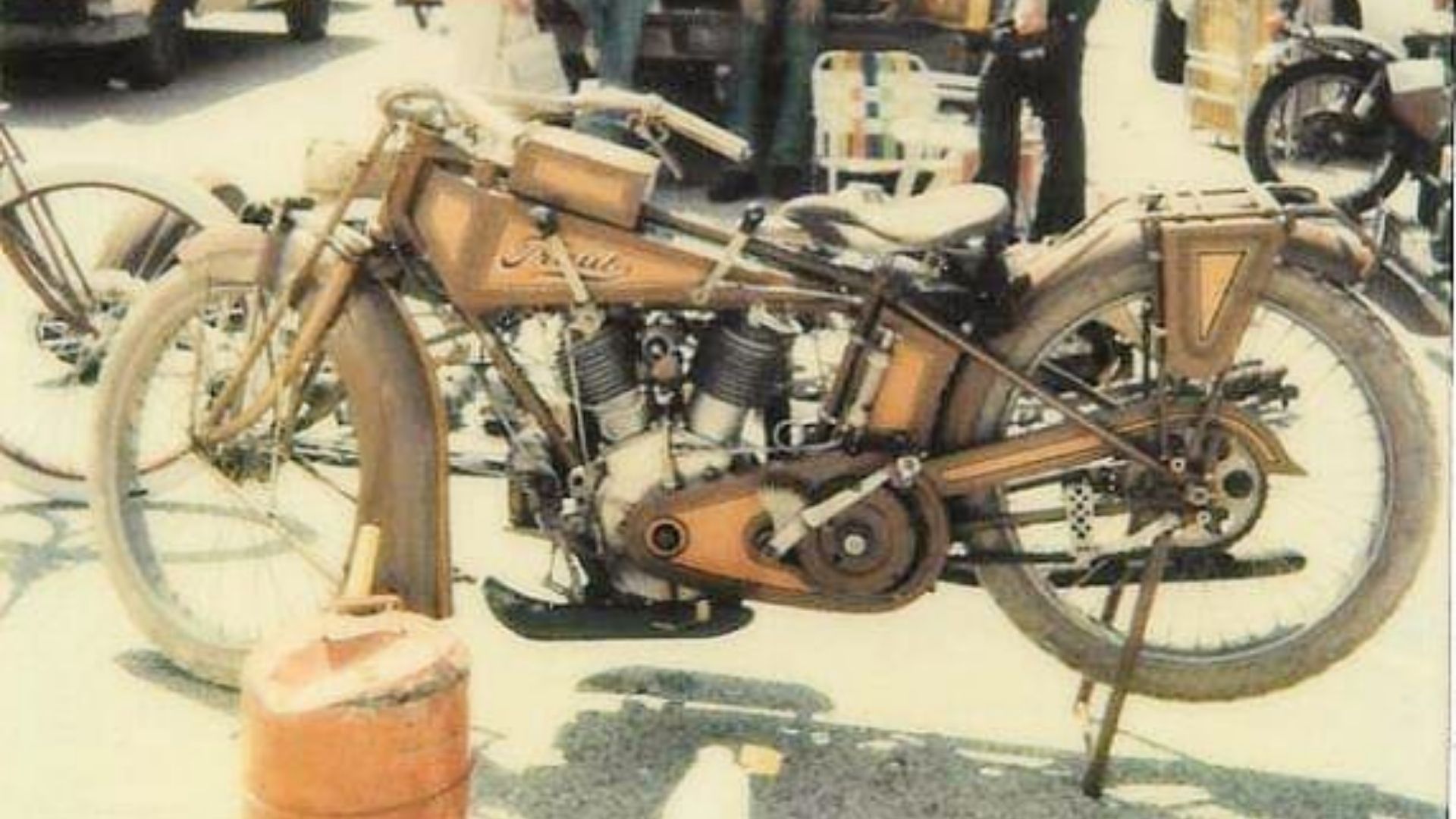There’s a real mystery behind it, too…
If you love a good mystery and you also love motorcycles, the story of the Traub discovered in a Chicago-area basement is right up your alley. It’s a tale of intrigue surrounding what many call the rarest motorcycle in the world. Debates have raged for decades about how it ended up in the basement as well as its origins.
Check out the Harley-Davidson made to be driven from a sidecar here.
Back in 1967 a plumber received a call to fix the pipes in a Cicero house. As many plumbers do, the man ended up in the basement as he chased down the origins of the problem. However, the job required him to take down part of the basement wall at the front of the house. Imagine his shock and that of the house’s owner when the plumber discovered a vintage motorcycle hidden away underneath the porch, behind that basement wall.
Even more amazing, the motorcycle seemed to show little evidence of aging. The orange and butterscotch paint looked fantastic, the engine appeared to be almost new, there was no signs of rust, and even the white tires seemed to be in great shape. Emblazoned on the tank was the name “Traub” which was one of the few clues about what the bike even was.

As historians have dug into this mystery motorcycle, a few things seem to be mostly agreed upon. The Traub is a one-off bike made in either 1916 or 1917. Most agree the man who created the bike was Richard Traub of Chicago, especially since the man sent a letter to the editor of Motorcycle Illustrated to tell of the 4-horsepower bike he had created at home back in 1907. No doubt the man kept tinkering, ultimately creating the beauty which as been a thing of fascination for some time.
It’s also mostly agreed upon that the technology of this Traub was far ahead of other motorcycles of the era. For example, the V-twin could get the motorcycle up to 85 mph, making it much faster than contemporary bikes. The engine contains few gaskets, twin cams and a chain-driven front-mount magneto for a setup like none other. Plus, the creator used a 3-speed transmission unlike any known at the time. The design of the Traub meant more power produced, greater efficiency, and better performance than virtually any motorcycle from the teens.
One tale claims the son of the previous owner of the house stole the Traub motorcycle back in 1916. When the father discovered his son’s crime, he demanded the bike be returned and that his son enlist in the US Army. Those who tell this story say the son hatched a plot, hiding the motorcycle under the porch and behind a wall, plotting to retrieve it when he returned from WWI. However, that young man died in Europe, so the bike was never retrieved.
That’s quite the story, but it seems a little too contrived for many to fully believe. Plus, a 1918 registration was found with the motorcycle, which was too late for the son to have entered the War to End All Wars.
With over 100 motorcycle companies spread across the United States a little over a century ago, tracking down the exact history of this Traub is almost impossible. Many people would tinker in home workshops, creating motorcycles either for themselves or to try to get a new brand off the ground. By the 1920s, all but a handful of the companies had gone defunct.
The Traub has passed through a number of hands. Not too long after its dramatic discovery, a motorcycle dealer in Chicago, Torello Tacchi, traded his Suzuki for it. Tacchi did all the necessary work on the bike. Then, in 1972 it was purchased by Bud Ekins, a stunt rider who was friends with Steve McQueen. California motorcycle collector Richard Morris purchased it next, who sold it to Dale Walksler, who runs the Wheels Through Time museum in North Carolina. It’s still in the museum, so if you want to see the Traub in person, that’s the place to go.





